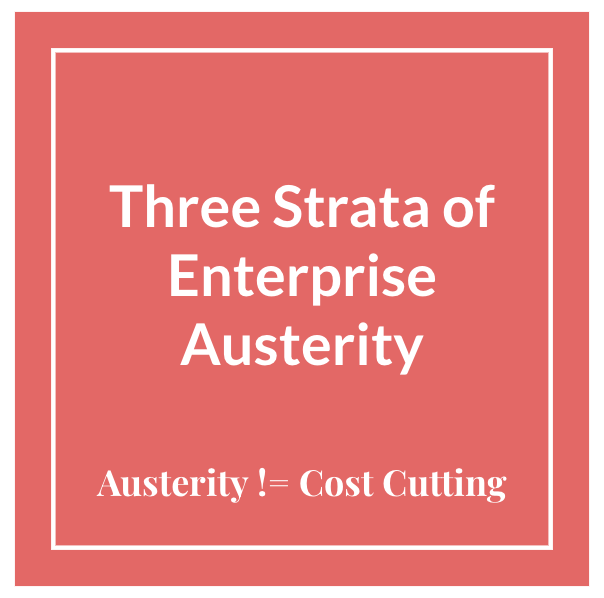

Enterprise Austerity is an often ignored concept in most corporations until things start going south. Charting out an austerity roadmap and then continuously monitoring spend enables enterprises to avoid abrupt cost-cutting. However, assigning the right amount of budget to correct set of priorities needs a strategy before the tooling and approval workflows kick-in.
The below table, which is an extension of Unix's Permission Triads, facilitates categorizing spend in two dimensions - “To what extent?” and “For who?”.
“To what extent?” or Level has three categories:
1. Luxury: The highest level of spend; fulfilling to enjoyable levels
2. Absolute Musts Only
3. Nothing: No spend allowed
“For whom?” or Recipient is the recipient of the above Level of austerity. Categorized into below three:
1. Self (Me, the organization etc)
2. In-Radar Objectives (Signify What matters to me? At personal level, these could be subscriptions for a job change, spending on fine dining with a date with the intention of getting into a relationship (or not) etc., while at enterprise level, these could be subscribing to a recruitment software with the objective of expanding teams, spend on a holiday party for improving employee morale etc.
3. Others: Everything outside of self and the objective radar. At personal level, these could be buying clothes for no reason, signing up for a streaming service subscription, donating to charity etc. At the enterprise level, these could be expanding without downstream projects, spend on SaaS providers or SaaS providers for projects not in scope, corporate philanthropy when not in the set of in-radar objectives etc.
Based on the above two dimensions, the below table is populated to summarize the current allocation.
| Level/Recipient | Self | In-Radar Objectives | Others |
|---|---|---|---|
| Luxury | N | N | N |
| Absolute Musts | Y | Y | N |
| Nothing | N | N | Y |